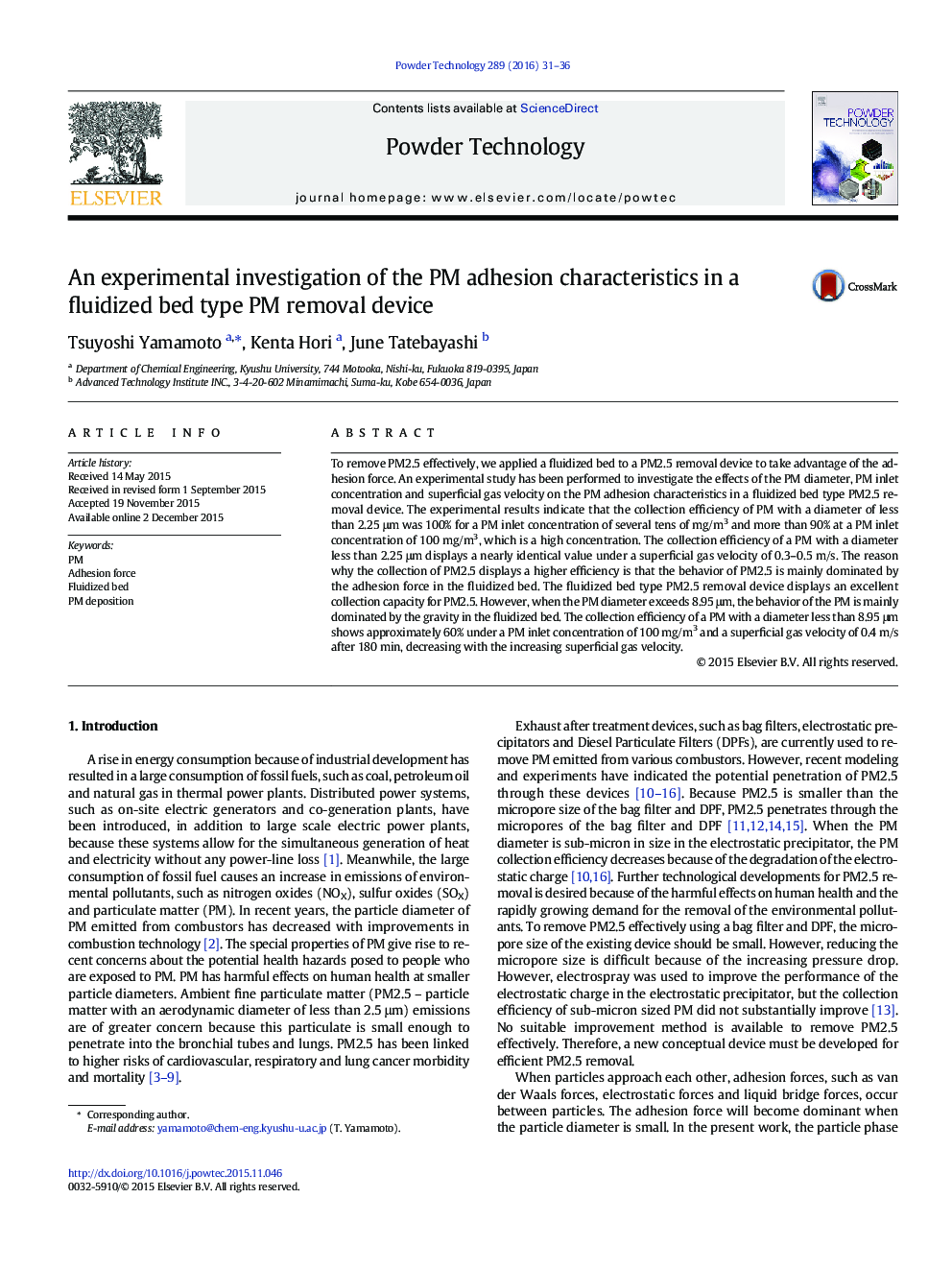| کد مقاله | کد نشریه | سال انتشار | مقاله انگلیسی | نسخه تمام متن |
|---|---|---|---|---|
| 235297 | 465632 | 2016 | 6 صفحه PDF | دانلود رایگان |

• A fluidized bed has been applied to a PM removal device to effectively remove PM2.5.
• The behavior of PM2.5 is mainly dominated by the adhesion force in the fluidized bed.
• The fluidized bed type PM removal device has an excellent PM2.5 collection ability.
To remove PM2.5 effectively, we applied a fluidized bed to a PM2.5 removal device to take advantage of the adhesion force. An experimental study has been performed to investigate the effects of the PM diameter, PM inlet concentration and superficial gas velocity on the PM adhesion characteristics in a fluidized bed type PM2.5 removal device. The experimental results indicate that the collection efficiency of PM with a diameter of less than 2.25 μm was 100% for a PM inlet concentration of several tens of mg/m3 and more than 90% at a PM inlet concentration of 100 mg/m3, which is a high concentration. The collection efficiency of a PM with a diameter less than 2.25 μm displays a nearly identical value under a superficial gas velocity of 0.3–0.5 m/s. The reason why the collection of PM2.5 displays a higher efficiency is that the behavior of PM2.5 is mainly dominated by the adhesion force in the fluidized bed. The fluidized bed type PM2.5 removal device displays an excellent collection capacity for PM2.5. However, when the PM diameter exceeds 8.95 μm, the behavior of the PM is mainly dominated by the gravity in the fluidized bed. The collection efficiency of a PM with a diameter less than 8.95 μm shows approximately 60% under a PM inlet concentration of 100 mg/m3 and a superficial gas velocity of 0.4 m/s after 180 min, decreasing with the increasing superficial gas velocity.
Figure optionsDownload as PowerPoint slide
Journal: Powder Technology - Volume 289, February 2016, Pages 31–36